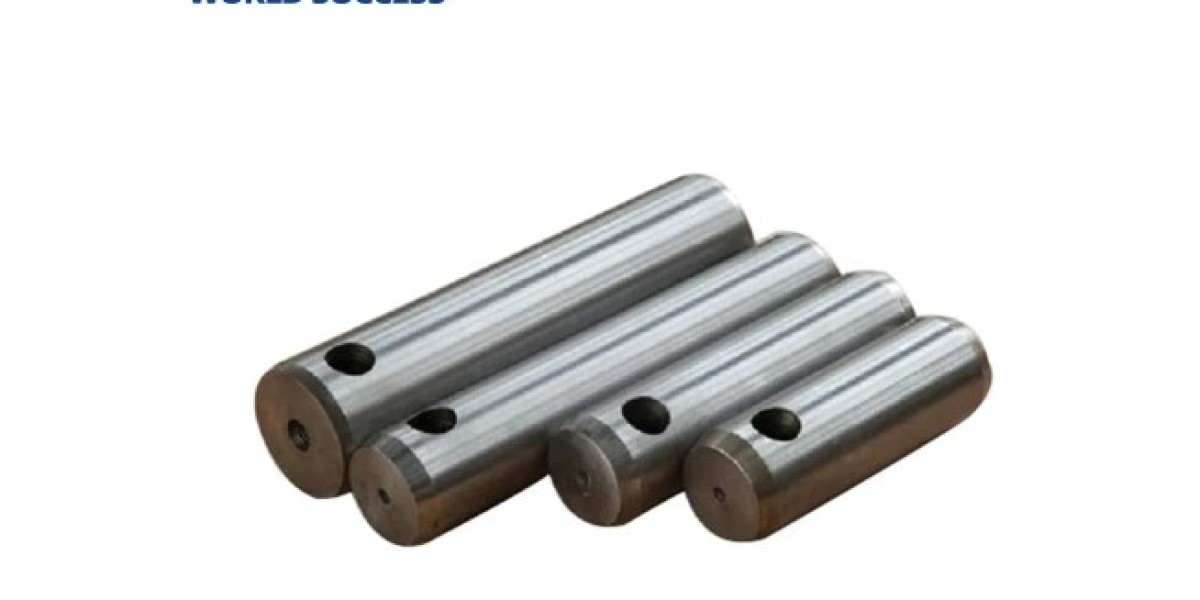In the field of mechanical engineering, pin shafts play a crucial role in various applications. These small yet significant components are used to connect and transmit power between rotating elements. This article aims to provide an overview of pin shafts, their types, importance in mechanical engineering, applications, and design considerations.
Pin Shafts: An Overview
Pin shafts, also known as dowel pins, are cylindrical rods typically made of steel or other durable materials. They are used to align and secure two or more components in a mechanical system. Pin shafts are designed to fit into pre-drilled holes, providing a precise and reliable connection.

Types of Pin Shafts
1. Solid Pin Shafts: These are solid cylindrical rods with a uniform diameter throughout their length. They are commonly used for simple alignment and fastening applications.
2. Tapered Pin Shafts: Tapered pin shafts have a conical shape, with one end being larger in diameter than the other. This design allows for a tight fit and increased stability in applications where there may be slight misalignments.
3. Split Pin Shafts: Split pin shafts, also known as cotter pins, have a split or bent design. They are used to secure components such as nuts and bolts, preventing them from loosening or rotating.
Importance of Pin Shafts in Mechanical Engineering
1. Alignment and Positioning: Pin shafts ensure precise alignment and positioning of components, reducing the risk of misalignment and subsequent damage to the system.
2. Power Transmission: Pin shafts transmit power between rotating elements, such as gears, pulleys, and sprockets. They enable the transfer of torque and rotational motion, allowing the system to function efficiently.
3. Load Distribution: Pin shafts distribute the load evenly across connected components, preventing excessive stress on any single part. This helps to enhance the overall strength and durability of the mechanical system.

Applications of Pin Shafts
1. Automotive Industry: Pin shafts are extensively used in engines, transmissions, and suspension systems to connect various components and ensure their proper alignment.
2. Manufacturing Machinery: Pin shafts play a vital role in manufacturing machinery, such as conveyors, presses, and assembly lines. They facilitate the smooth operation and synchronization of moving parts.
3. Aerospace Industry: Pin shafts are utilized in aircraft engines, landing gear systems, and control mechanisms. They provide secure connections and precise alignment, ensuring the safety and reliability of aerospace systems.
Design Considerations for Pin Shafts
1. Material Selection: Pin shafts should be made from strong and durable materials, such as hardened steel or stainless steel, to withstand the forces and wear associated with their applications.
2. Dimensional Accuracy: Pin shafts must be manufactured with precise dimensions to ensure proper fit and alignment. Tolerances should be carefully considered to avoid interference or loose connections.
3. Surface Finish: The surface finish of pin shafts should be smooth to reduce friction and wear. Coatings or treatments can be applied to enhance corrosion resistance and lubrication.

Conclusion
Pin shafts are essential components in mechanical engineering, providing alignment, power transmission, and load distribution in various applications. Their design, material selection, and dimensional accuracy are crucial factors to consider for optimal performance and reliability. Understanding the importance of pin shafts allows engineers to design and implement efficient mechanical systems.
Induction Hardening of Pin Shafts: Enhancing Strength and Durability










